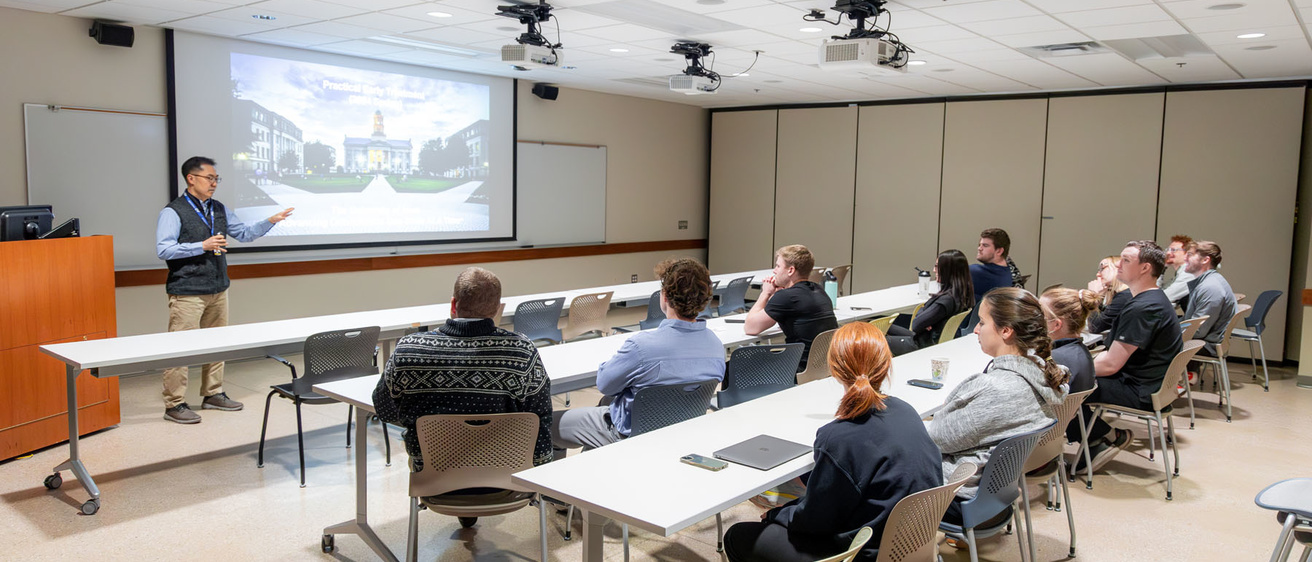Why Choose Iowa Orthodontics?
Leading Researchers
Our faculty are leaders in their fields, conducting groundbreaking research year after year. Our team is a part of the Iowa Facial Growth Study, the Iowa Institute for Oral Health Research, and many more State programs. We are dedicated to further the orthodontic profession to better help our patients.
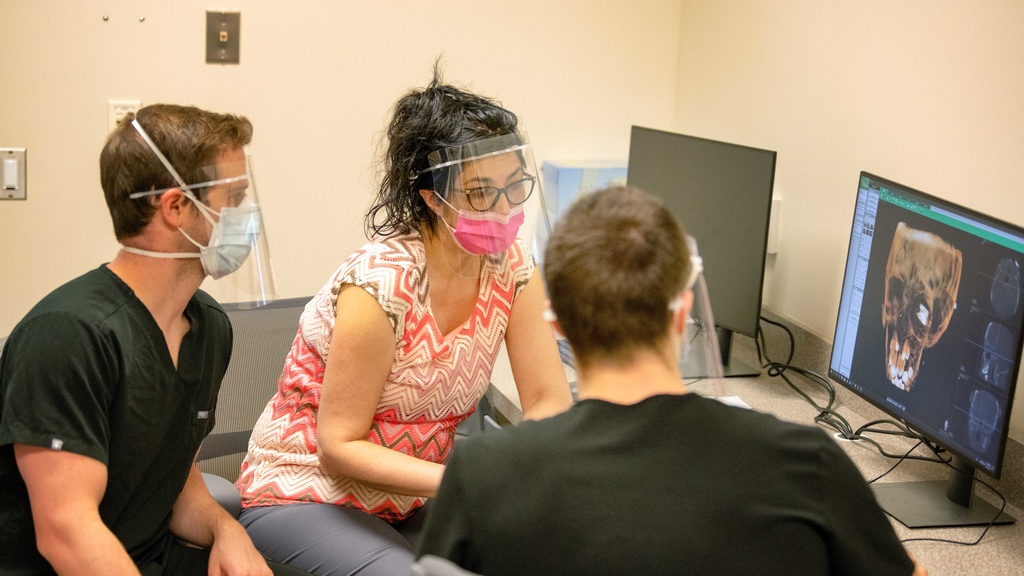
Award-Winning
Our faculty have coached the residents to win more American Board of Orthodontic awards for well treated cases than any other school. These cases comes from patients treated in our clinics by our residents, and they regularly place #1 among over 70 orthodontics programs in the country for quality of care.
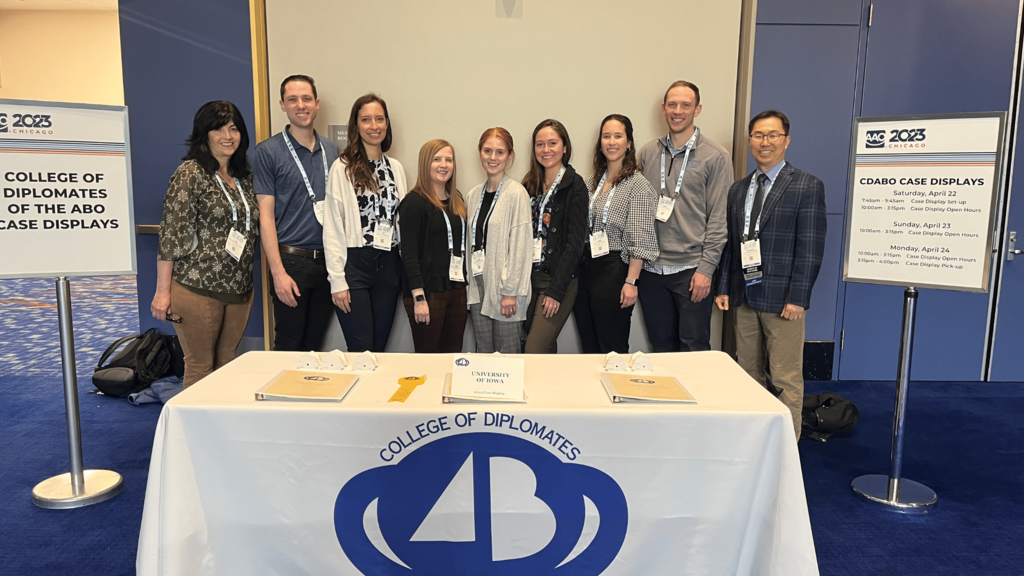
State of the Art Technology
Our facilities are equipped with some of the best tools available. We have a CBCT (Cone-Beam computed tomography VaTech), an Intraoral Scanner (iTero), 3D printers (SprintRay), in-house, aligner-type orthodontic appliances, and much more.
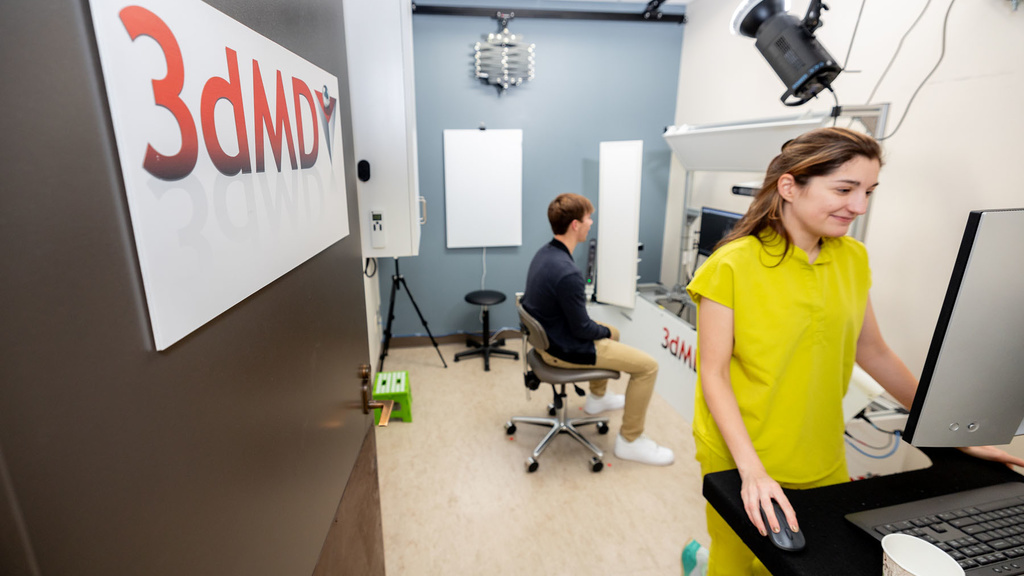
Multidisciplinary Care
Our college features a comprehensive dental care team including experts in aesthetic dentistry, oral surgery, pediatric dentistry, prosthodontics, periodontics, and pathology. Thus, we bring the college's elite academic quality of care to any kind of dental need, no matter how complex.
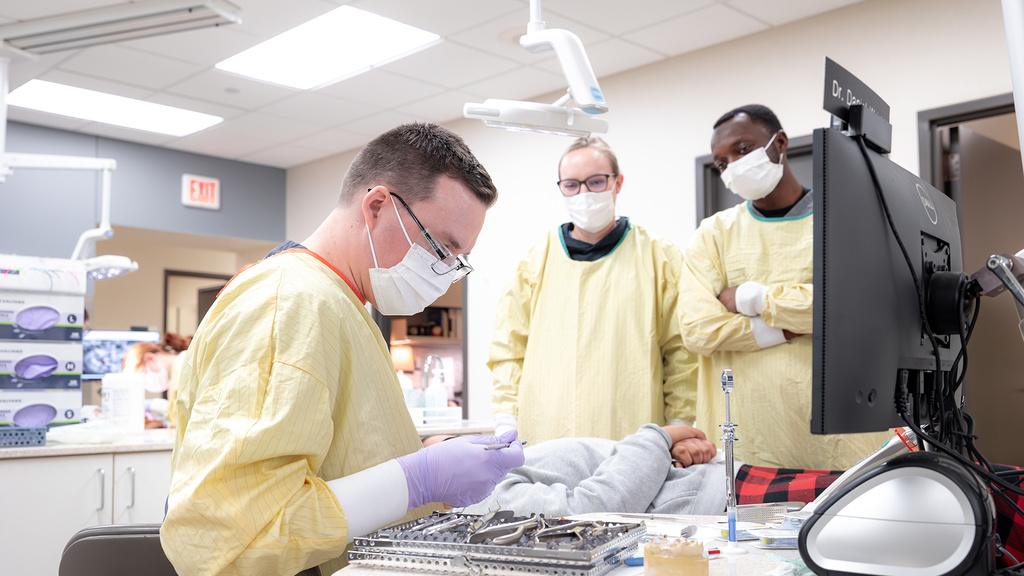
Specialty Program Overview
After achieving a dental degree, dentists may wish to specialize in Orthodontics by enrolling as a resident in an accredited Orthodontic Program.
Iowa’s graduate program in orthodontics prepares residents to practice orthodontics and dentofacial orthopedics. The programs' objectives are to provide residents with an in-depth education in biological and biomechanical principles related to orthodontics; to teach residents to diagnose, establish treatment plan, and provide patients with comprehensive orthodontic care in a state-of-the art facility; and to develop residents’' research and service skills.
Opportunities are available for research and independent study in the department, and there are special facilities for research in biomechanics and craniofacial growth. Multidisciplinary interactions with other departments within and beyond the College provide residents with learning and research opportunities such as pre-clinical/clinical biomechanics in orthodontics, surgical orthodontics, cleft lip and palate treatment, speech pathology, animal study, genetics/genomics, human growth study, and artificial intelligence.
Degree
Master of Science and Certificate in Orthodontics
The Master of Science program in orthodontics requires a minimum of 30 semester hours of graduate credit. Residents must satisfactorily complete a thesis based on a hypothesis-driven original research project to qualify for an M.S. in addition to the Certificate in Orthodontics.
Satisfactory completion of 24 months (July – June) of intensive requirements qualifies residents to receive the Certificate in Orthodontics. Requirements include didactic courses, seminars, clinical practicum, oral defense and successful submission of a thesis project.
Application Process
Questions and inquiries about the specialty program or the application process can be directed to Dr. Kyungsup Shin, the specialty program director, by email at kyungsup-shin@uiowa.edu
Materials
The application deadline is August 1.
The Orthodontics MS program application process is described at http://grad.admissions.uiowa.edu/academics/orthodontics-ms and the application is available online at apply.admissions.uiowa.edu/admissions/graduate.page
Requirements
Admission requires the D.D.S. or its equivalent and satisfaction of the Graduate College Requirements.
(http://grad.admissions.uiowa.edu/academics/graduate-college-admission-requirements)
Department Requirements
Faculty in the University of Iowa Department of Orthodontics feel that residency program participation in the Postdoctoral Dental Matching Program is fair and beneficial to applicants. We also feel that it is in the long-term best interest of the specialty. Consequently, we have decided to interview applicants who are applying exclusively to programs participating in the Match.
Orthodontic Residents
Orthodontics residents are dentists who are pursuing additional training in orthodontics. Most residents begin private-practice in orthodontics immediately after completing our advanced training program. Residents provide the primary orthodontic care for their patients and their work is overseen by our world-class orthodontics faculty.
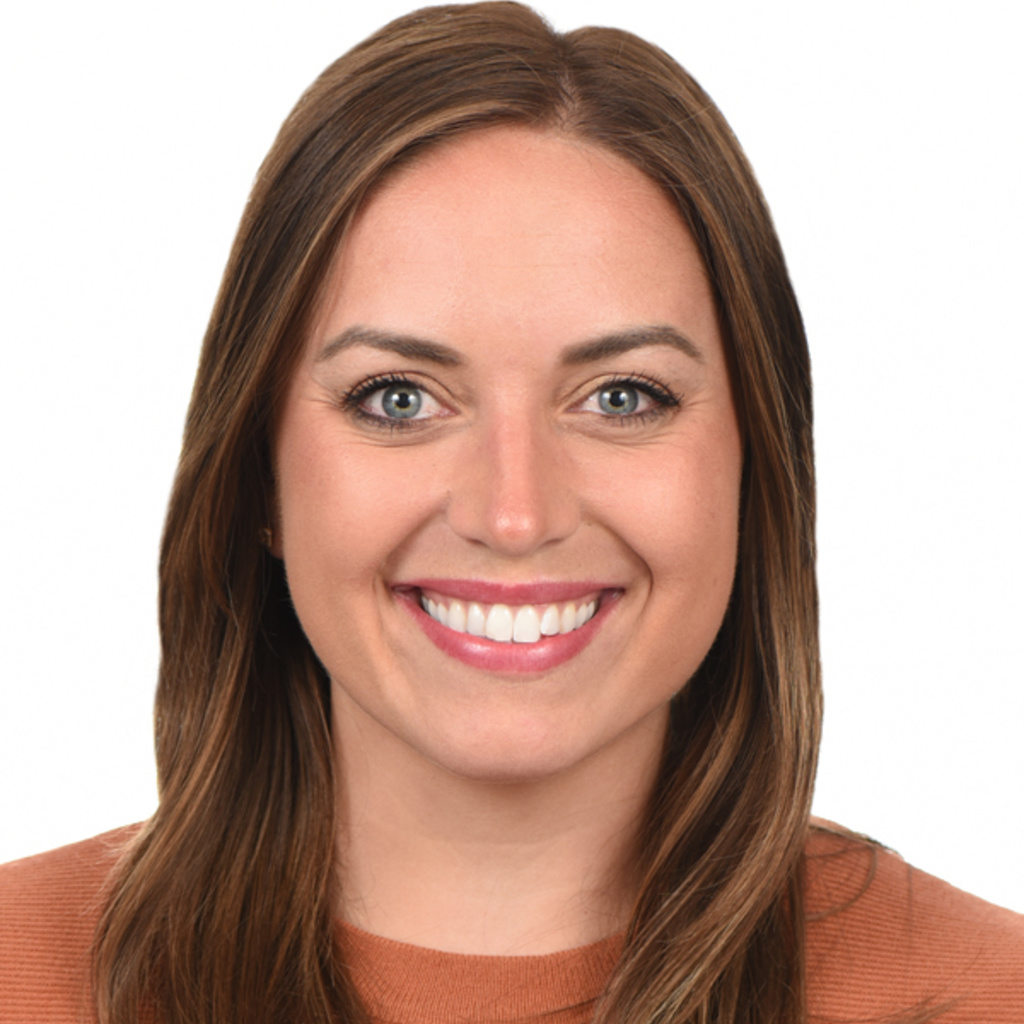
Elaine Boosalis Toaddy
2nd Year Resident
"I am originally from Maple Grove, Minnesota and completed my dental training at The University of Iowa in 2019 before serving as a general dentist for five years in the US Navy Dental Corps. I am excited to be back in Iowa City to continue my Hawkeye education! In my free time, my husband Andrew and I enjoy going on our daily walks with our two black Labrador retrievers, Hawkeye football games, hiking, traveling, reading a good book, and spending time with family."
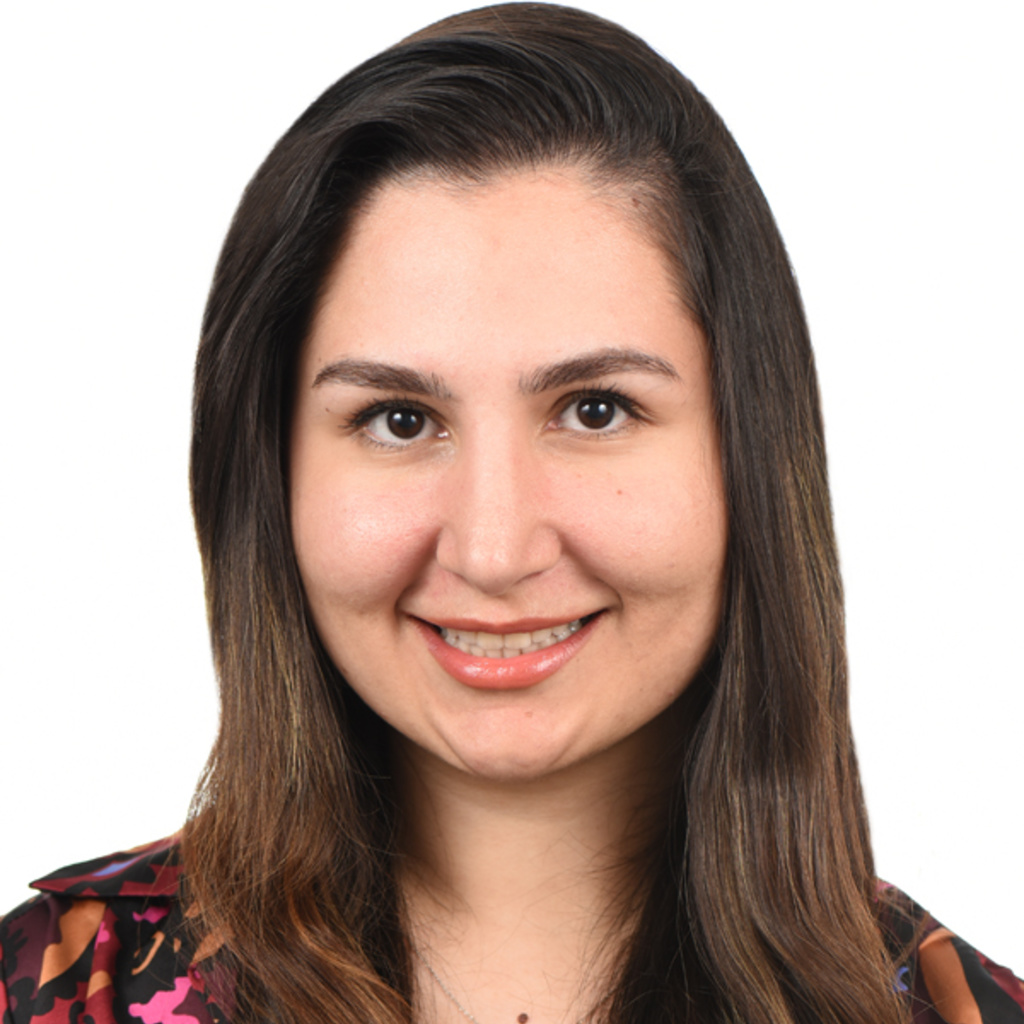
Melika Farshad
2nd Year Resident
“I was born and raised in the beautiful city of Shiraz, Iran. Before moving to Iowa, I lived in New York City, where I received my dental degree from New York University College of Dentistry. Outside of the clinic, I enjoy cooking and baking, playing tennis or pickleball with friends, and catching up with women's basketball games, especially the Hawkeyes!"
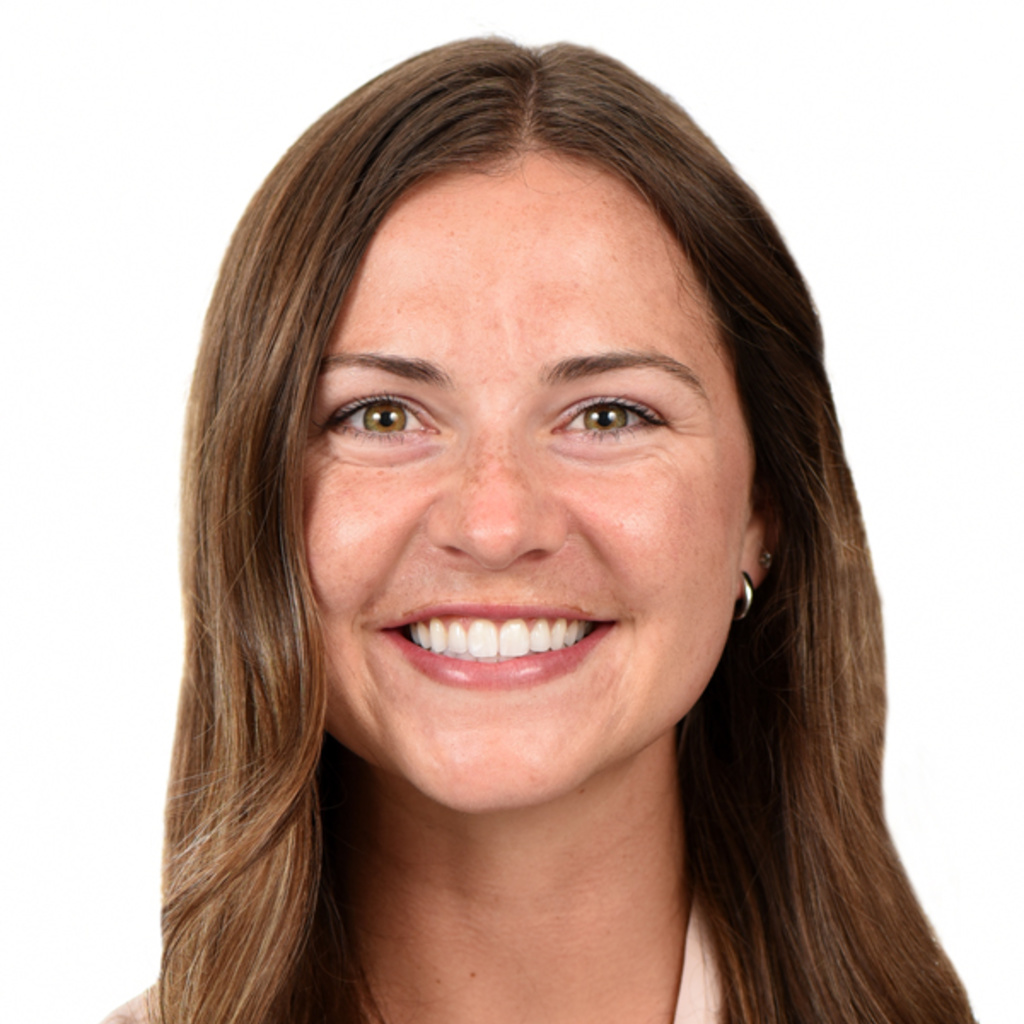
Sydney Sanchez
2nd Year Resident
"I am from Parkston, South Dakota, and I graduated dental school from the University of Iowa. Outside of clinic, I'm usually doing something outdoors with my husband, reading a good book, or enjoying time with friends, family, or my cat."
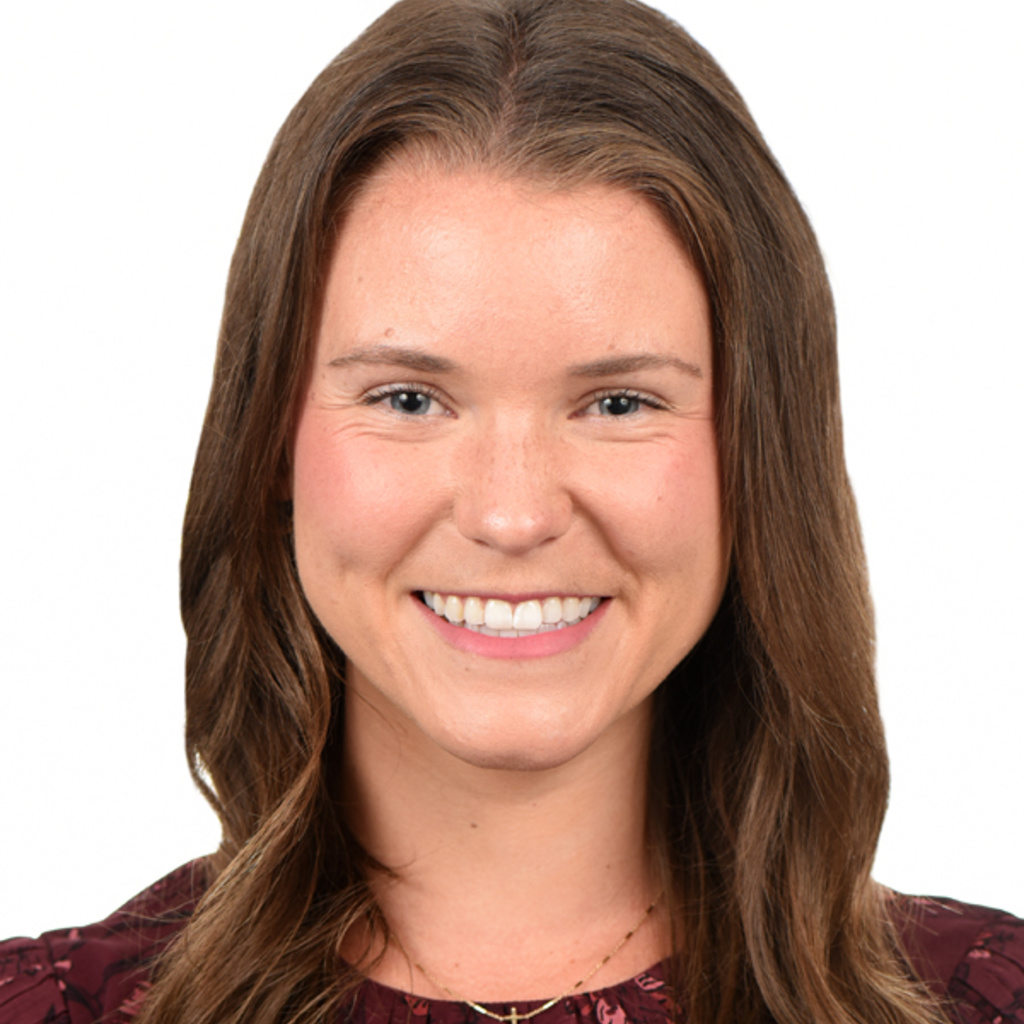
Amanda Seaberg
2nd Year Resident
"I am from West Des Moines, IA, and received my D.D.S. from The University of Iowa College of Dentistry. I enjoy spending time with my husband and our extended families, running/working out, playing pickleball, and getting together with friends."
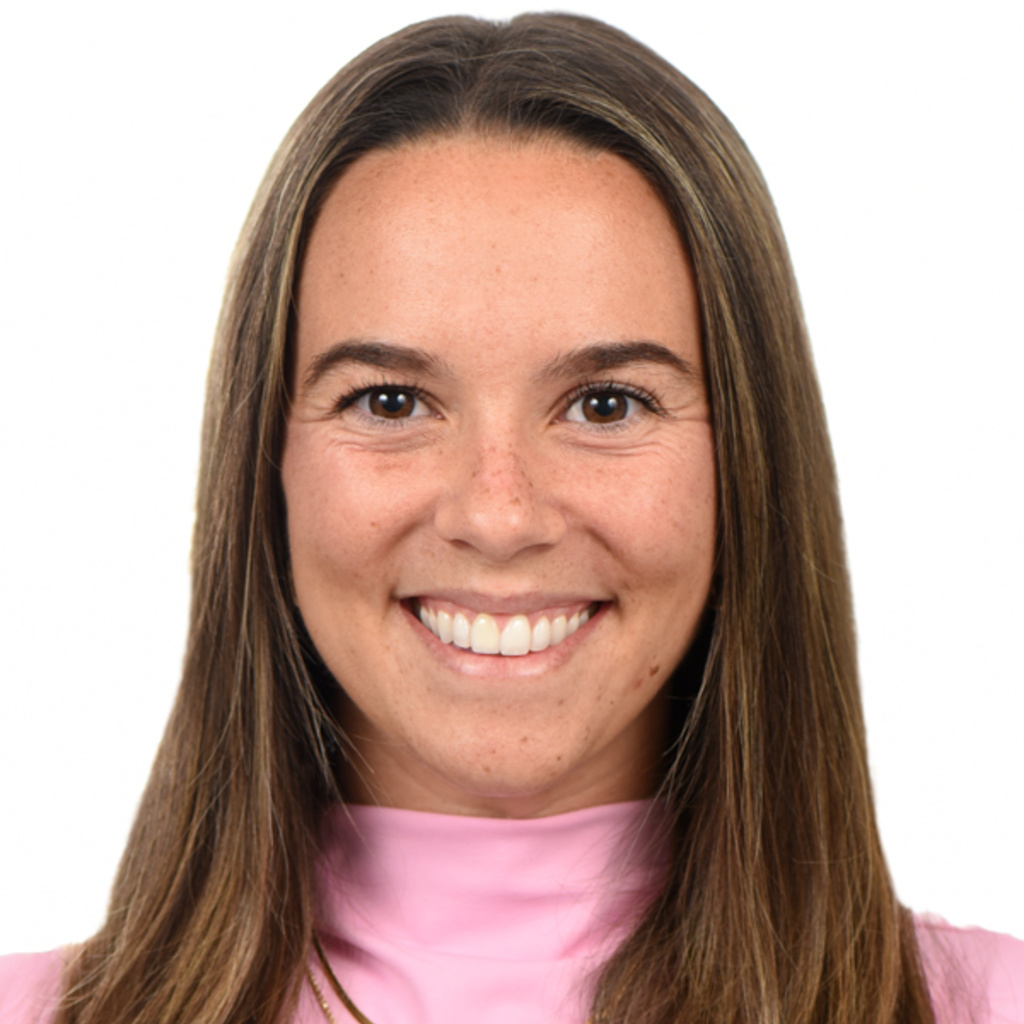
Lyda Sypawka
2nd Year Resident
"I am from Greenville, North Carolina. For dental school, I attended Virginia Commonwealth University in Richmond, Virginia, and graduated in May 2024. When not in the clinic, you can find me going on a long outdoor walk, reading psychological thriller novels, or taking on some sort of DIY project."
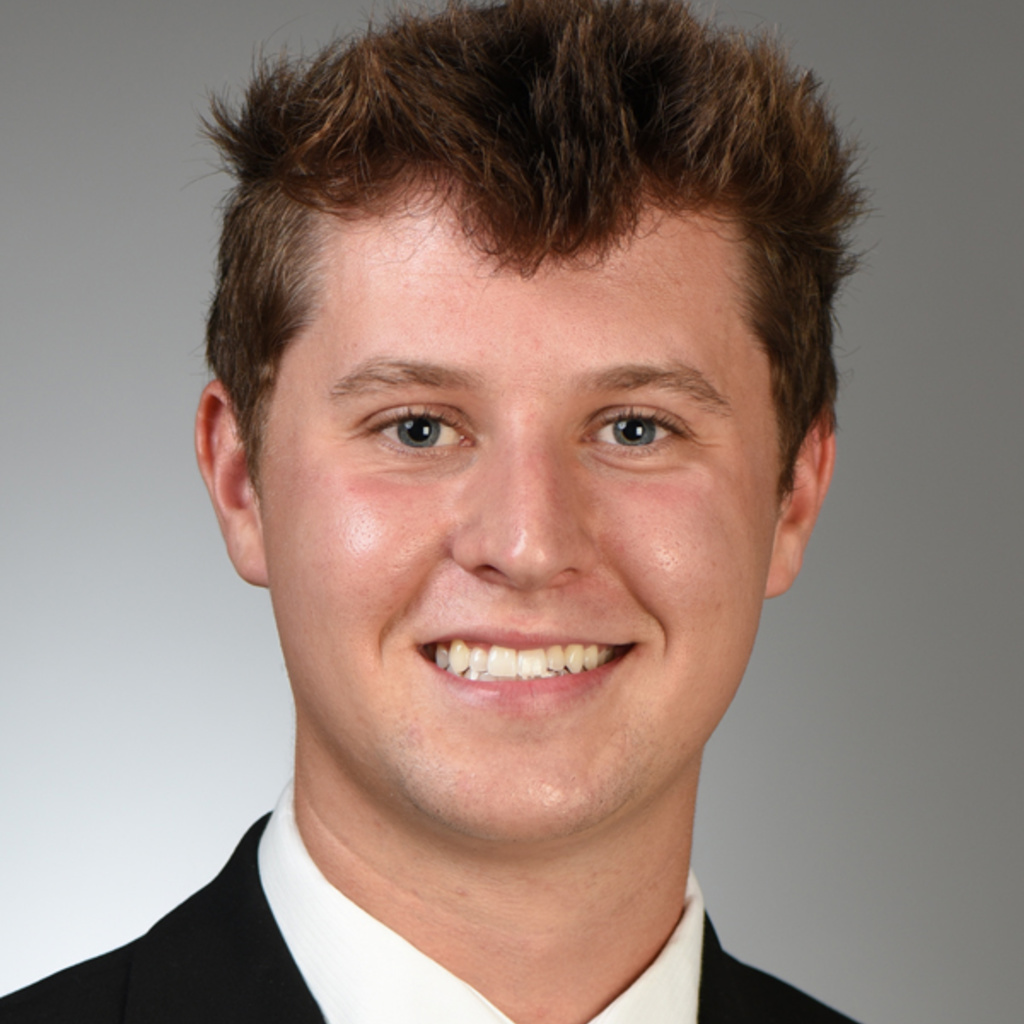
Casey Delaney
1st Year Resident
"I'm from Joliet, IL, and received my undergraduate and D.D.S. degrees from the University of Iowa. When I am not at school, I enjoy spending time with my wife, going on walks with our dog, golfing, or hanging out with friends."

Justin Hunt
1st Year Resident
“I grew up in Sandy, Utah, at the foot of the Rocky Mountains, where easy access to nature sparked my love for outdoor activities like skiing, fishing, and hiking. Fortunately, my wife shares this passion, and we spend much of our free time enjoying the outdoors together. I later moved across the country to attend the University of North Carolina for dental school, where I discovered my passion for orthodontics. That passion has now brought me to Iowa, and I’m excited to serve this wonderful community!"

Garret Curtis
1st Year Resident
"Although I was born a Hawkeye while my father completed his orthodontic training here at the University of Iowa, I grew up just outside of Coeur d'Alene, Idaho. I completed my undergrad at Brigham Young University in Provo, Utah, then came to the University of Iowa to pursue an education in dentistry and orthodontics. I am passionate about my hobbies, which include mountain biking, skiing, fly fishing, rock climbing, golf, and pickleball."

Sara Ha
1st Year Resident
"I grew up in New Jersey before moving to Boston for undergrad, and then Philadelphia to attend dental school at the University of Pennsylvania. I’m very excited to be in Iowa for my first midwestern experience and am looking forward to cheering on the Hawkeyes! Outside of the clinic, I enjoy hot yoga, live music, and exploring new trails with my husband and our dog Misty."
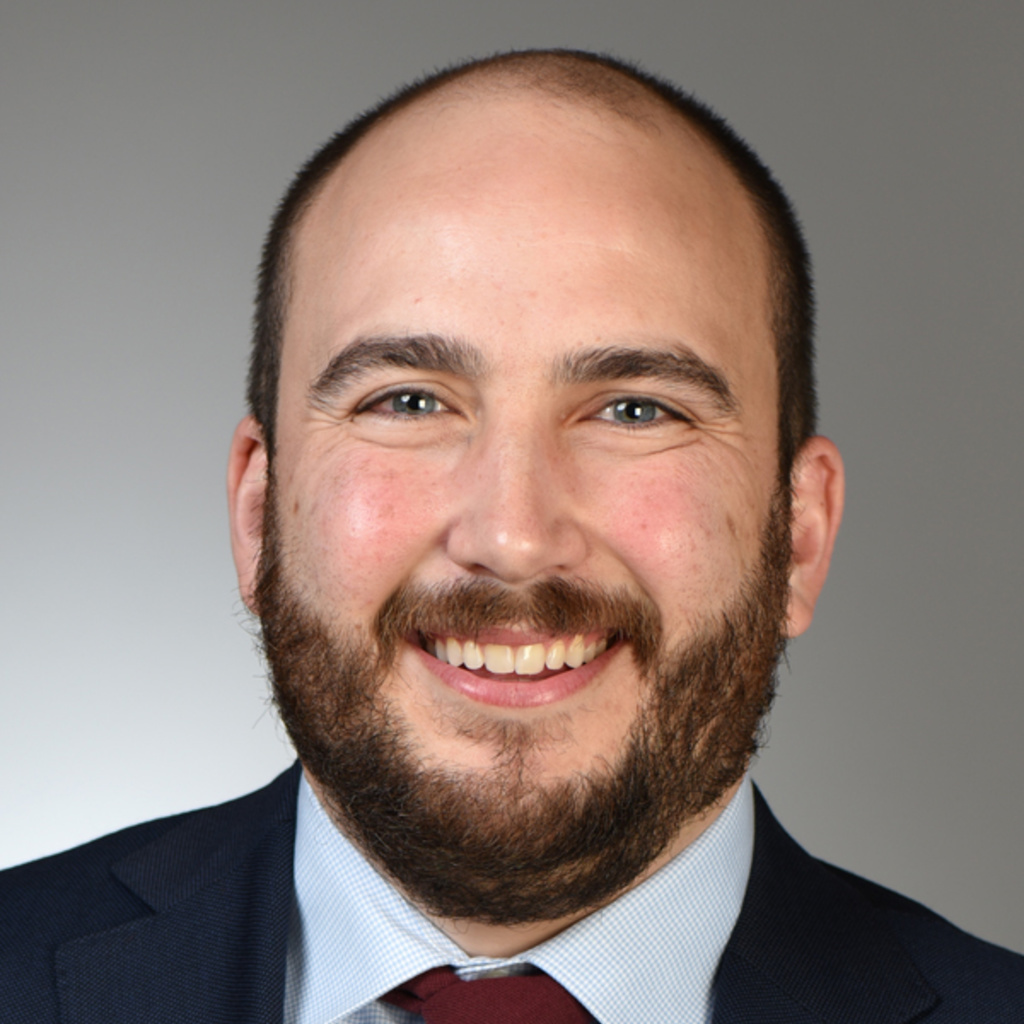
Michael Chavez
1st Year Resident
"My dad was in the Navy, so we would move every 3-4 years. I lived and attended elementary school in Naples, Italy, when my dad was stationed there, and then went to high school in New Bern, NC. I completed my undergraduate degree at the College of Charleston, received my PhD in oral biology from Ohio State University, and completed my Dental DDS training at the University of Iowa. I enjoy gardening, reading, and spending time with my family and my two young daughters."
Research
The focus of the thesis project is to create new knowledge to advance the specialty of orthodontics. Alumni and supporters of the department have established the Dr. George Andreasen Memorial Fund in honor of Dr. Andreasen, former faculty member and department head who spearheaded the application of Nitinol wire in the specialty of orthodontics. This substantial fund provides support for orthodontic resident research projects. The University of Iowa is a Big Ten university and offers research facilities in all areas of endeavor.
The majority of Iowa thesis research projects result in publications in peer-reviewed journals such as the American Journal of Orthodontics and Dentofacial Orthopedics (AJO-DO), the Angle Orthodontist, Progress in Orthodontics, and Seminars in Orthodontics.
Courses
ORDN:5200 TMJ and Advanced Topics in Orthodontics. 1 s.h.
General system theory, control theory, cybernetics, systems analysis; role of applied human biologist; human biology as a science.
ORDN:5202 Advanced Case Analysis. 2 s.h.
Literature concerning orthodontic diagnosis; treatment of particular problems; case histories of patients treated in graduate clinic.
ORDN:5203 Advanced Orthodontic Technique. 1 s.h.
Skills for treatment of disfiguring malocclusions; use of edgewise biomechanical therapy; laboratory focus on typodont exercises.
ORDN:5204 Biomechanics. 1 s.h.
Principles in biomechanics applied for comprehensive orthodontic treatment combined with case-based didactic clinical review.
ORDN:5205 Facial Growth. 1-2 s.h.
Theories, processes; use of accepted facial growth concepts in treatment of individuals with malocclusions during active growth period.
ORDN:5209 Pediatric Orthodontic Practicum. arr.
Render orthodontic care in state-of-the art clinical facility. The scope of treatment ranges from early interventions to comprehensive care for adolescents with craniofacial anomalies.
ORDN:5210 Orthodontic Seminar. 2-3 s.h.
Evaluation, discussion, criticism, defense of diagnostic and treatment approaches to orthodontic non-surgical cases that have been completed for orthodontic treatment.
ORDN: 5211 Orthodontic Clinical Skills. 1 s.h.
TBD
ORDN:5217 Cephalometrics. 3 s.h.
Use of cephalometric radiographs (lateral and/or postero-anterior) in formulating orthodontic diagnosis, treatment plans for malocclusions; cephalometrics as a tool for craniofacial structure research.
ORDN:5220 Craniofacial Diagnosis, Treatment/Topics. 1 s.h.
Literature on anatomy, phylogeny, ontogenesis, physiology of craniofacial structures.
ORDN:5221 Surgical Orthodontic Seminar. 1 s.h.
Evaluation, discussion, criticism, defense of diagnostic and treatment approaches to orthodontic cases that need, are undergoing, or have completed surgical orthodontic treatment.
ORDN:5400 Craniofacial Practicum. 2.s.h.
Evaluation, discussion, criticism, defense of diagnostic and treatment approaches to orthodontic cases that need, are undergoing, or have completed surgical/non-surgical orthodontic treatment for patients with cleft lip and palate.
ORDN:6211 Problems: Orthodontics. 1 s.h.
Case-presentation seminar for difficult, challenging, on-going cases that have been treated by 2nd-year residents.
ORDN:6212 Research Orthodontics. 2 s.h.
Residents’ thesis project: pre-proposal, thesis progress meetings, oral examination, and completed thesis submission.
ORDN:6215 Orthodontic Journal Club. 1 s.h.
Literature review on required articles for ABO-board examinations and current biological, technical publications.
